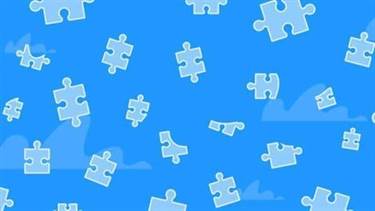- ホーム
- Software development
- Difference Between Paas And Saas
Difference Between Paas And Saas
2022年10月21日
We’ll also take a look at some examples of each to make it a little easier to understand. SaaS provides numerous advantages to employees and companies by greatly reducing the time and money spent on tedious tasks such as installing, managing, and upgrading software. This frees up plenty of time for technical staff to spend on more pressing matters and issues within the organization. Understanding the structure of SaaS and PaaS technologies will help you determine the right approach for your business.
PaaS refers to an online service for software developers to develop and manage applications without taking time to build infrastructure for development and maintenance. Workday has been a SaaS (Software as a service) company and has now entered PaaS (Platform as a Service) at ‘Workday Cloud Platform’. For those who consider cloud services for their business, it’s important to grasp the difference between IaaS, PaaS and SaaS — the core cloud models available. You should choose the particular model depending on your business requirements and on the number of tasks you want to perform yourself or delegate to the service provider. Forbes experts predict that 83% of enterprise workloads will be in the cloud by 2020.
IaaS vs PaaS vs SaaS: Use Cases and Examples
Infrastructure as service or IaaS is the basic layer in cloud computing model. To answer those and other questions, you’ll want a quick primer on cloud computing. With both products, there’s a risk of external management data that can compromise the function and security of the tools you’re using. SaaS is best for companies looking for out-of-the-box ease of use, and PaaS is best for companies looking to build a solution on an existing network.

SaaS seems to be quite wide area where vendor provides almost everything from infra to platform to software. So SaaS is Iaas+PaaS along with different softwares like ms office, virtual box etc.. When you have what is iaas a software developed by you, but you want to deploy and run on a publicly available platform then you use PaaS. You can access all three via internet browser or online apps available on different devices.
ARPU: How to Calculate and Interpret Average Revenue Per User
Here our customers pay to us (license cost) and/or to cloud provider for instances. For example, if I wanted to create an app for my business, I would use a PaaS product, and it would act as the platform for my app to run on. Once it’s finished, it would be considered SaaS because it would now provide a service to its users.
- By choosing these cloud-based solutions, corporations enjoy minimum expenses and maximum simplicity in terms of deployment.
- In each case, the vendor hosts the end user’s software and ensures secure delivery over a network connection.
- SaaS products are best for companies looking for easy-to-use applications to streamline their business processes.
- While SaaS vendors deliver software over a secure internet connection, PaaS providers deliver a platform for creating software in a similar fashion.
- Being able to upgrade or downgrade as you go allows a business to always be at their optimal state in their journey.
Typically IaaS customers can choose between virtual machines (VMs) hosted on shared physical hardware (the cloud service provider manages virtualization) or bare metal servers on dedicated (unshared) physical hardware. Customers can provision, configure and operate the servers and infrastructure resources via a graphical dashboard, or programmatically through application programming interfaces (APIs). With these solutions, the cloud service provider takes care of everything that isn’t relevant to the core job profile of the end-user.
Give them a taste of the product, and once they like it, ask them to start paying. Expanding the business can take time, but it also offers many opportunities to increase your NRR by attracting customers through multiple channels. For sufficiently valuable clients, you can also look at this as an opportunity to provide personalized training or encourage further use of your software. If they’re not using it because they don’t understand it, helping them work it into their daily operations can give you a chance to upsell them later. Customers don’t always understand the value of your products or services at different levels. In some cases, changing your messaging can help them understand your value propositions and convince them to upgrade.

Furthermore, a PaaS vendor handles things like runtime, middleware, operating system, virtualization and storage — although the client or customer manages their own applications and data. Unlike SaaS users, IaaS customers must manage the applications, runtime, middleware, operating systems, and data they access. The IaaS providers, meanwhile, manage the servers, hard drives, networking, virtualization, and storage. SaaS (Software as a Service) providers sell access to application software and databases.
Customers would still need to build out their own tech stack, making IaaS more similar to using on-premise systems from a practical standpoint. SaaS, or software as a service, is the most comprehensive cloud computing service, delivering an entire SaaS application, managed by a vendor, through a web browser. This means that everything — including software updates, bug fixes, and maintenance — is handled by the SaaS provider. Customers don’t need to install anything; they simply connect to the app via a dashboard or API.

Utilizing PaaS is beneficial, sometimes even necessary, in several situations. For example, PaaS can streamline workflows when multiple developers are working on the same development project. If other vendors must be included, PaaS can provide great speed and flexibility to the entire process. PaaS is particularly beneficial if you need to create customized applications.










